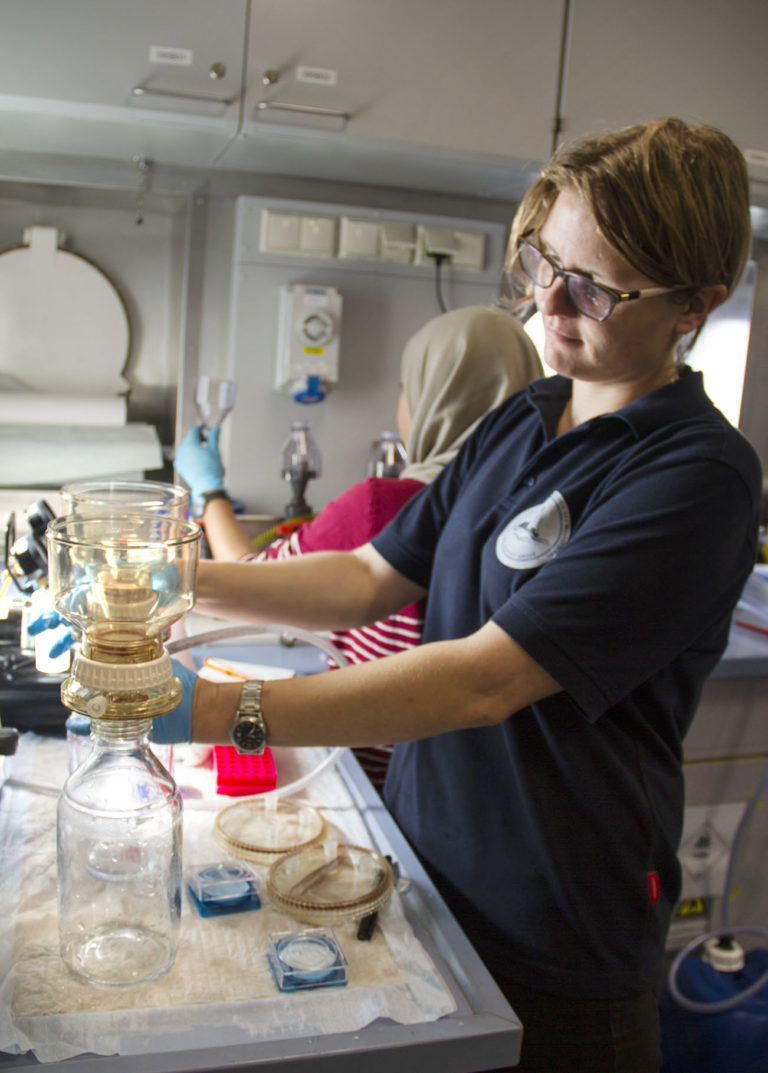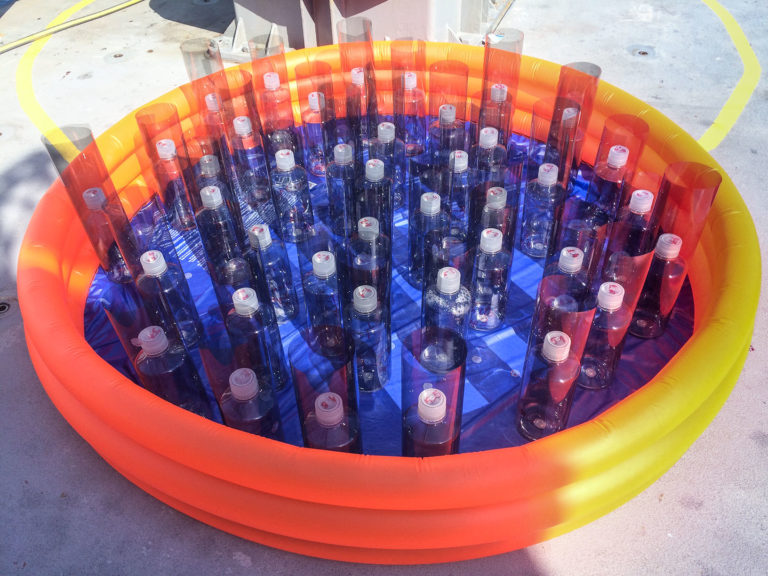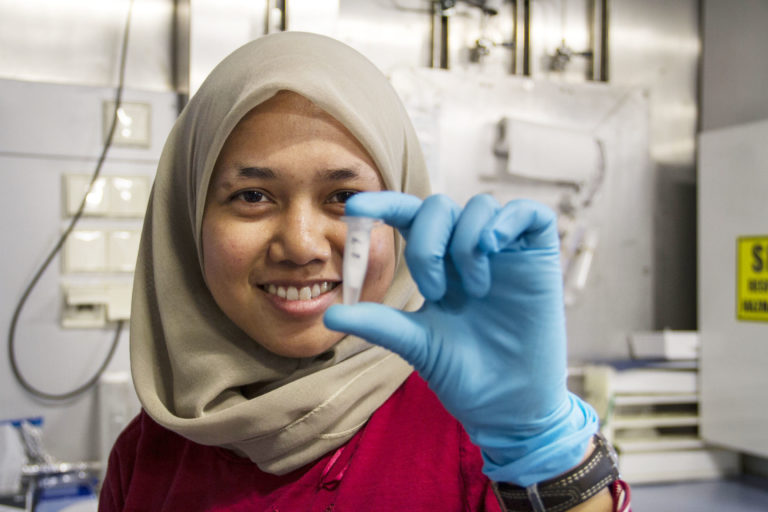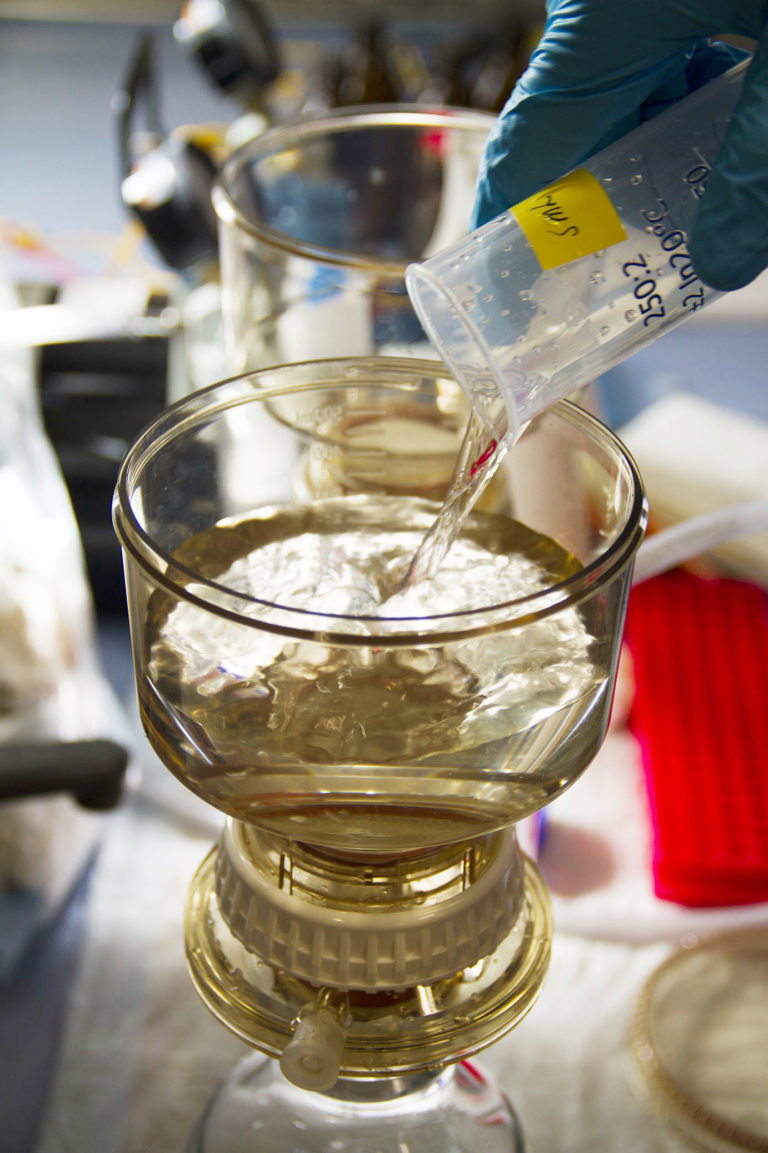It could be assumed that given the intensity of operations in this expedition, the thought of a five-day transit through calm waters would be warmly welcomed. The scientists would perhaps take advantage of the extra time by answering neglected emails, organizing their paperwork, or cleaning a few of their instruments; but mostly, many would expect them to rest, regain their energy and acclimatize to Falkor’s newfound rocking and rolling.

However, that has not been the case. No one has put it more clearly than Second Officer Allan Doyle: “This is a science cruise, not a cruise cruise.” Instead of relaxation, the resident experts lost no time preparing an experiment in which to invest their “idle” hours. Granted, it does not pertain the sea surface microlayer, but it does concern all of us: Climate Change.
Acid Is Not Good News
As humanity continues releasing more and more carbon dioxide into the atmosphere, the pressure is placed on the ocean to maintain the planet’s natural equilibrium. The oceans absorb about a quarter of the CO2 we release into the atmosphere every year, but this comes with a hefty price: seawater’s chemistry is changing. When carbon dioxide is absorbed by seawater, chemical reactions occur that reduce its pH, carbonate ion concentration, and saturation of biologically important minerals. This process is called “Ocean Acidification.”
After a CTD cast showed the chlorophyll maximum at a depth of 65 meters, Dr Oliver Wurl’s working group decided to apply an experiment they had previously designed to understand how ocean acidification could impact autotrophic organisms. These organisms are able to create their own food through photosynthesis by taking up CO2, therefore contributing to the regulation of climate.
The team collected the water and filled 48 bottles with it, half of which were manipulated by adding hydrochloride acid. Each day of this transit, Janina Rahlff and Nur Ili Hamizah Mustaffa have filtered water and collected microorganisms to later analyze their DNA, RNA, chlorophyll a and extracellular carbonic anhydrase (eCA).

Enzymes Offer a Clue
The planet is changing and all life may need to adapt to survive, including microorganisms. eCA is an enzyme used by organisms to counteract carbon dioxide deprivation. eCA helps them to accumulate CO2, hence when the levels of CO2 go down, the concentration of eCA attached to the cells of phytoplankton increases. Ili wonders if organisms can also down-regulate the enzyme in CO2-rich conditions.

She and Oliver Wurl adapted previous methods to develop a new way of measuring eCA, specially when working onboard a research vessel. By applying high concentrations of salt, Ili breaks the ionic interaction that attaches eCA to cellular walls. This way she is able to effectively measure the amount of the enzyme in photosynthesizing organisms. Sure enough, in the manipulated water samples, it has decreased or even disappeared.
How deep does this response go? Has it reached the organisms’ RNA? That is Janina’s question. She filters the water samples and freezes them at -80 degrees centigrade. Once back ashore, she will to look for eCA’s signature within the DNA and RNA of the preserved organisms.
The Clock is Ticking

Seminars at sea, birthday celebrations, Equator crossing ceremonies, even Halloween: The team would have no reason to be bored or unoccupied during this transit as it is, but they know that any knowledge gained when it comes to climate change is extremely important. Oceans are the reactors of the planet and the chemical processes that take place in them are bound to have a clear impact in the Earth we inhabit in the future.
Soon the sea surface microlayer will be the focus of their daily routine again, but today Ili and Janina continue their work in Falkor’s wet lab, contributing to our widen understanding of the oceans and the role they play in our transforming planet.

